Last Updated on January 17, 2024 by teamobn
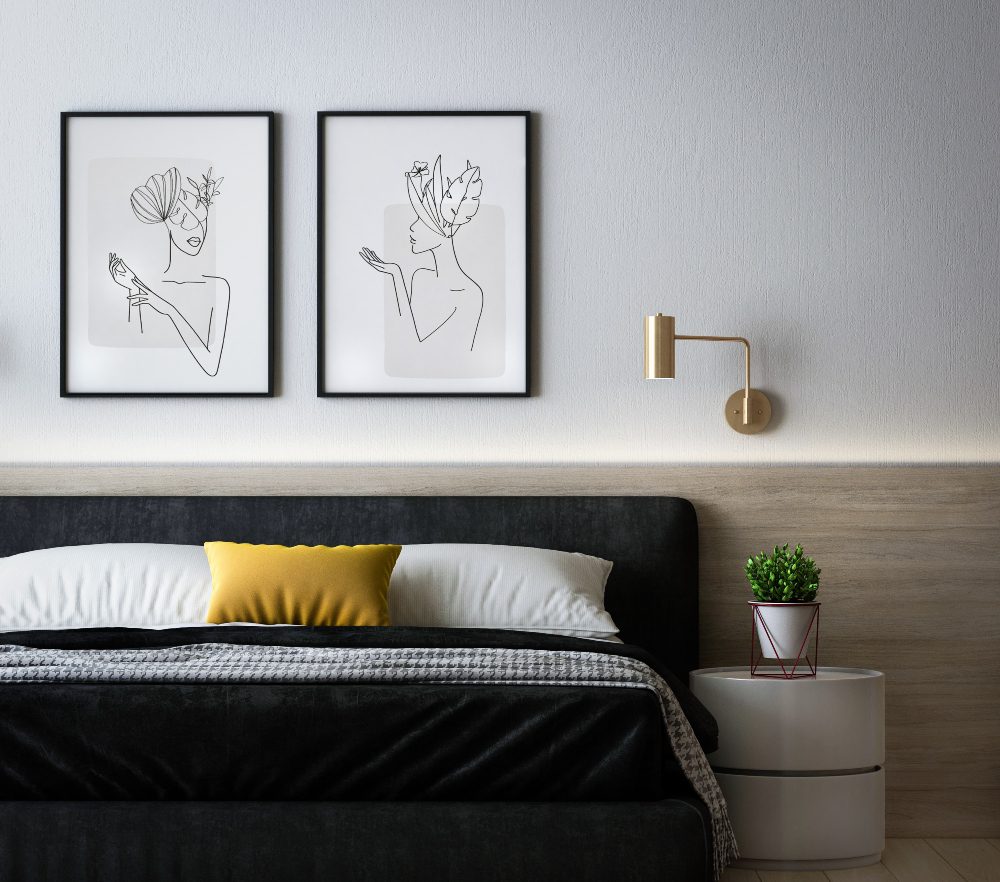
Modern home interior design significantly influences how we shape our living environments. This article will take you through the latest trends and innovations in modern interiors. We’ll see how these trends do more than just beautify our homes; they adapt to and reflect our evolving lifestyles.
Contents
- 1 What Goes Into Modern Home Interior Design
- 2 Minimalism: The Heart of Modern Design
- 3 Inspiration for Modern Home Interior Design
- 4 Challenges and Considerations in Modern Design
- 5 FAQs on Modern Interior Design
- 5.1 What is the main principle of modern interior design?
- 5.2 How can I incorporate modern design into a small space?
- 5.3 Is modern design the same as contemporary design?
- 5.4 Can modern interiors be warm and inviting?
- 5.5 How important is lighting in modern design?
- 5.6 Can I mix other design styles with modern design?
- 5.7 What materials are commonly used in modern interior design?
- 5.8 Are plants and greenery suitable for modern interiors?
- 5.9 How can I make my home “smart” while keeping a modern design aesthetic?
- 5.10 What colors go best with a modernized home?
- 6 Conclusion
What Goes Into Modern Home Interior Design
Modern home interior design is more than just a style. It’s a reflection of contemporary life. This approach to design blends aesthetics with functionality, creating spaces that are as beautiful as they are livable. Modern home interior design often features clean lines, open spaces, and a neutral color palette. In this section, we explore what modern home interior design entails and its evolution.
Defining Modern Home Interior Design
Modern home interior design stands out for its emphasis on simplicity and functionality. It steers away from the ornate and complex, favoring instead a more streamlined and sleek look. This style is characterized by a minimal use of decor, an open floor plan, and a neutral color scheme, often accented with bold colors. There should be a marriage between form and function in a modernized home.
Evolution of Modern Home Interior Design
The evolution of modern home interior design mirrors changes in societal attitudes and technological advancements. Initially inspired by the modernist movement, it has continually adapted to incorporate new materials and technologies. This evolution reflects a shift towards more sustainable and smart homes, highlighting how modern home interior design is not static but rather a dynamic and responsive field.
Modern home interior design continues to evolve, always aligning with the needs and preferences of contemporary living. By understanding its principles and history, we gain insight into why modern home interior design remains a popular choice for many homeowners and designers alike.
Minimalism: The Heart of Modern Design
Minimalism is often considered the core of modern home interior design. This design philosophy emphasizes simplicity, functionality, and clarity. A minimalist design also takes into account functionality by adding more open space in homes.
Principles of Minimalist Design
Minimalist is a way of doing more in your home design with less. This principle is not just about having fewer items; it’s about cherishing the beauty of space and form. Here’s an expanded view of the key principles:
Simplicity in Form and Function: In modern home interior design, minimalism advocates for simple, streamlined forms. Furniture and decor are chosen for their practicality and clean aesthetics. You can see this design through the furniture, decorations, and coloring.
Clean Lines and Open Spaces: One of the most distinctive features of minimalism in modern home interior design is the preference for clean, crisp lines. These lines create a sense of calm and order. Open spaces are integral, allowing rooms to feel more expansive and breathable.
Functional Furniture with an Emphasis on Quality: In minimalist modern home interior design, every piece of furniture is chosen with purpose. The focus is on high-quality materials and craftsmanship, ensuring that each item is both functional and durable. This approach values long-lasting design over temporary trends.
Decluttered Spaces: Minimalism is synonymous with decluttered spaces. This principle extends beyond physical clutter, encouraging a decluttering of unnecessary design elements as well. In modern home interior design, this creates a space that is not only visually pleasing but also mentally calming.
Harmony and Balance: The ultimate goal of minimalism in modern home interior design is to create a sense of harmony and balance. This is achieved through the thoughtful arrangement of furniture and the careful selection of decor, ensuring that each element contributes to a cohesive whole.
Influence of Minimalism on Modern Home Interior Design
Minimalism has revolutionized modern home interior design. It’s a design approach that has transformed our living spaces, focusing on efficiency, sustainability, and a seamless blend between indoors and outdoors. Let’s delve deeper into how minimalism influences our homes:
Efficient Use of Space: Minimalism in modern home interior design encourages the efficient use of space. It promotes the idea that less is more, leading to more thoughtful and purposeful spatial planning. This efficiency is not just about saving space but about maximizing its utility and aesthetic appeal.
Sustainability and Eco-Friendliness: The minimalist approach aligns closely with sustainable practices in modern home interior design. By prioritizing quality over quantity and functionality over excess, minimalism encourages a reduction in waste and a more environmentally conscious way of living. It often involves choosing materials and products that are sustainable and have a lower environmental impact.
Enhanced Functionality: In modern home interior design, minimalism ensures that every element serves a purpose. This approach leads to more functional living spaces where each piece of furniture and decor adds value to the room. It’s about creating environments that are not just visually appealing but also highly practical.
Psychological Well-being: The minimalist approach in modern home interior design also considers the psychological impact of space on its inhabitants. Clutter-free and well-organized spaces are known to reduce stress and enhance mental clarity. The clean lines and uncluttered aesthetic of minimalism can create a peaceful and calming atmosphere in the home.
Harmony Between Interior and Exterior: Minimalism also emphasizes the relationship between the interior space and the external environment. In modern home interior design, this often translates into large windows, natural light, and a color palette inspired by nature. The aim is to create a seamless flow between indoors and outdoors, enhancing the living experience.
Innovative Design Solutions: Minimalism has pushed modern home interior design towards more innovative solutions. Designers are continually finding creative ways to merge functionality with simplicity, resulting in unique and inspiring spaces.
At its core, minimalism’s impact on modern home interior design centers around creating spaces that are visually appealing yet highly functional. This design style meets the needs of today’s homeowners who seek beauty and practicality in their living spaces.
Inspiration for Modern Home Interior Design
What does it take for property owners to come up with their modern home interior design ideas? Below are several aspects to consider, which will help you modernize your living space.
Technology Integration in Modern Homes
The integration of technology in modern home interior design has transformed how we interact with our living spaces. This marriage of tech and design enhances both the functionality and aesthetic appeal of homes. In this era of smart homes and automated systems, technology integration is a key component in modern home interior design.
Smart Homes and Automated Systems
Smart home technology is at the forefront of modern home interior design. This technology includes automated systems for lighting, heating, security, and entertainment. Homeowners can control these systems remotely, increasing convenience and efficiency. Smart homes not only offer ease of use but also contribute to energy efficiency, aligning with the principles of modern design.
Enhancing Functionality with Technology
Technology integration in modern homes goes beyond convenience; it fundamentally enhances the functionality of living spaces. For instance, automated lighting systems can adapt to the time of day, mood, or activity, creating the perfect ambiance.
Similarly, smart thermostats adjust the temperature for optimal comfort and energy use. In modern home interior design, technology is used to create environments that adapt to the homeowner’s lifestyle.
The Role of Technology in Aesthetics
In modern home interior design, technology is not just functional but also an aesthetic element. Sleek and minimalist tech products complement the modern design ethos. Wireless systems and integrated devices reduce clutter, maintaining the clean lines and uncluttered look that is characteristic of modern design.
Future-Proofing Modern Homes
Integrating technology into modern home interior design also means thinking about the future. It involves installing systems that can be easily updated as technology evolves. This foresight ensures that modern homes remain at the cutting edge of both design and functionality.
Eco-Friendly and Sustainable Design
Eco-friendly and sustainable design is a cornerstone of modern home interior design. This approach focuses on minimizing the environmental impact of our living spaces. It incorporates materials and practices that are sustainable, promoting a healthier and more eco-conscious lifestyle. This aspect of modern home interior design is not just a trend; it’s a commitment to the planet and future generations.
Materials and Practices for Sustainable Interiors
In modern home interior design, the choice of materials is crucial for sustainability. Eco-friendly materials like bamboo, cork, and recycled metal and glass are increasingly popular. These materials are not only sustainable but also add unique textures and aesthetics to the home. Low-VOC (Volatile Organic Compounds) paints and adhesives are used to improve indoor air quality.
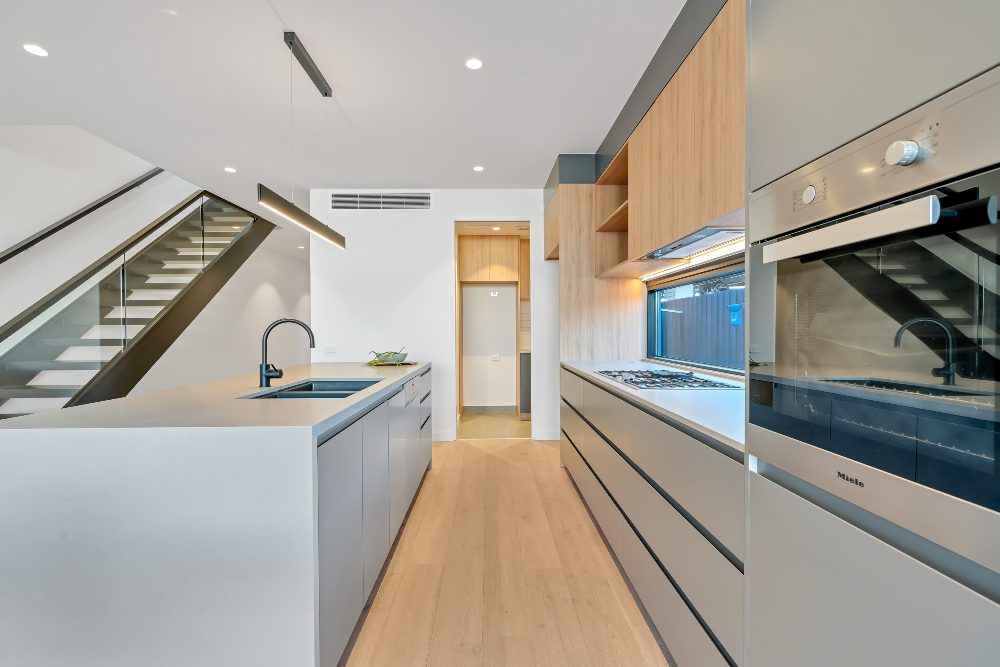
Energy Efficiency and Renewable Energy Sources
Energy efficiency is another key aspect of sustainable modern home interior design. This includes the use of LED lighting, energy-efficient appliances, and smart thermostats. Some homeowners also incorporate renewable energy sources like solar panels. These practices reduce the carbon footprint of the home and can lead to significant cost savings over time.
Water Conservation in Modern Design
Water conservation is also integral to eco-friendly modern home interior design. Low-flow faucets, showerheads, and dual-flush toilets are becoming standard in modern homes. These fixtures help conserve water without sacrificing functionality or design aesthetics.
Indoor Air Quality and Natural Elements
Modern home interior design also focuses on indoor air quality and the inclusion of natural elements. This can be achieved through indoor plants, which purify the air, and the use of natural fibers in furnishings. Plants are also great at improving the look of your home apart from making a healthier space.
Sustainability in Aesthetics
The decoration or aesthetic part of the home can also be sustainable. Eco-friendly materials and practices are used in ways that enhance the visual appeal of the space. The use of natural materials and elements brings a sense of warmth and connection to nature, aligning with the minimalist and clean aesthetic of modern design.
Color Trends in Modern Interior Design
In modern home interior design, the use of color is a critical element that shapes the ambiance and style of a space. Current color trends in modern design are diverse, offering a blend of classic neutrals, bold statements, and natural influences. These trends provide homeowners and designers with the opportunity to create spaces that are both contemporary and reflective of personal style.
Embracing Neutral Tones
Neutral tones remain a staple in modern home interior design. Shades of white, beige, and soft grays are popular for their versatility and timeless appeal. These colors create a clean, open feel in a room, serving as a canvas for accent pieces and personal touches. They also help in making spaces appear larger and more luminous.
Bold Accents for Character
Bold and vibrant colors serve as accents in modern home interior design. Deep blues, emerald greens, and mustard yellows are frequently used to add depth and focal points within a room. These colors are often incorporated through accessories, artwork, or a single statement wall, providing a dynamic contrast to the neutral backdrop.
Incorporating Earthy and Natural Shades
Earthy tones are increasingly prominent in modern home interior design. Inspired by nature, colors like olive green, terracotta, and burnt orange add warmth and a grounding effect to interiors. These hues pair beautifully with natural materials like wood and stone, enhancing the connection to the natural world.
Metallic Accents in Modern Design
Metallic colors, including gold, silver, and bronze, are used as sophisticated accents in modern interiors. These tones bring a touch of elegance and modernity, often seen in light fixtures, hardware, and decorative objects. They add a luxurious feel to the space without overpowering the overall design.
Psychological Impact of Color
Color trends in modern home interior design also consider the psychological effects on inhabitants. Colors can influence mood, with warmer shades creating a cozy atmosphere and cooler tones providing a calming effect. The choice of color in a space can significantly impact how it feels and functions.
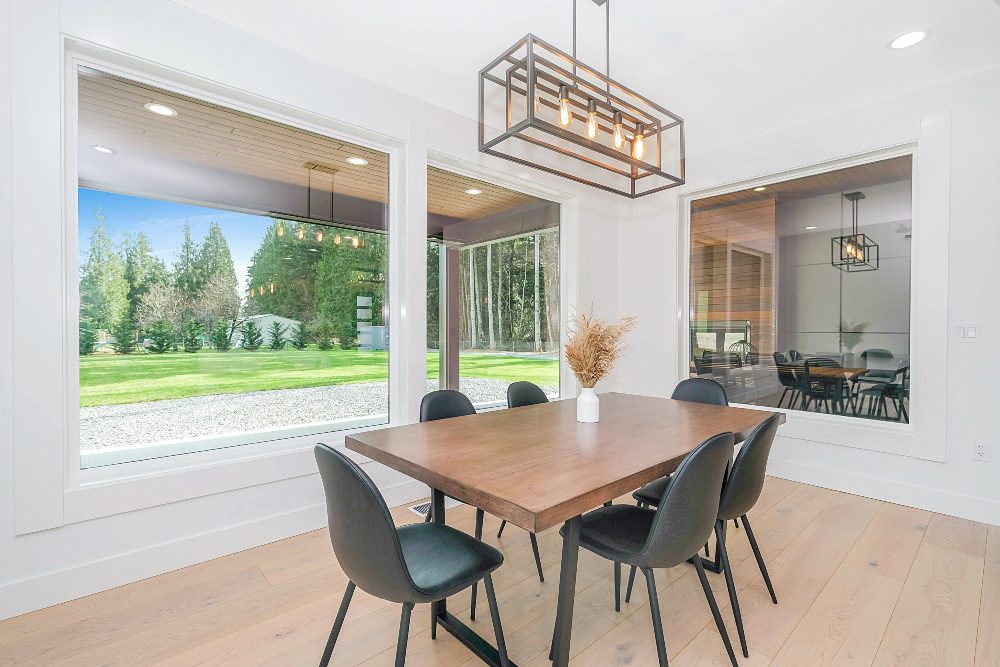
Innovative Furniture and Layouts
Innovative furniture and layouts are pivotal in modern home interior design, shaping spaces that are both functional and aesthetically appealing. The contemporary approach to furniture and spatial arrangement reflects the evolving needs of modern living. Here, we explore how innovative design solutions are transforming modern homes.
Modern Furniture Designs for Optimal Space Use
Modern furniture in interior design is characterized by its functionality and sleek form. Designers are creating pieces that are not only visually appealing but also highly practical. Multi-functional furniture, like sofa beds and extendable tables, are popular in modern homes, especially in urban settings where space is a premium. Modular furniture, which can be rearranged to suit different needs, is also a trend in modern interior design.
Creative Layout Ideas for Modern Living
The layout of a room plays a crucial role in modern home interior design. Open floor plans are a hallmark of modern homes, encouraging a fluid transition between living, dining, and kitchen areas. This openness fosters a sense of spaciousness and flexibility. Room dividers, such as shelving units or sliding panels, are used to define spaces within an open plan without disrupting the sense of openness.
Integrating Technology with Furniture
In line with the tech-savvy nature of modern living, furniture designs are increasingly integrating technology. This includes built-in charging ports, hidden speakers, and smart furniture that can interact with home automation systems. These innovations enhance the functionality of furniture, aligning it with the needs of contemporary lifestyles.
Customization in Modern Furniture
Customization is a growing trend in modern home interior design. Tailor-made furniture that fits specific spaces and needs is becoming more accessible. This allows homeowners to have furniture that is not just unique but also perfectly suited to their living environment and style preferences.
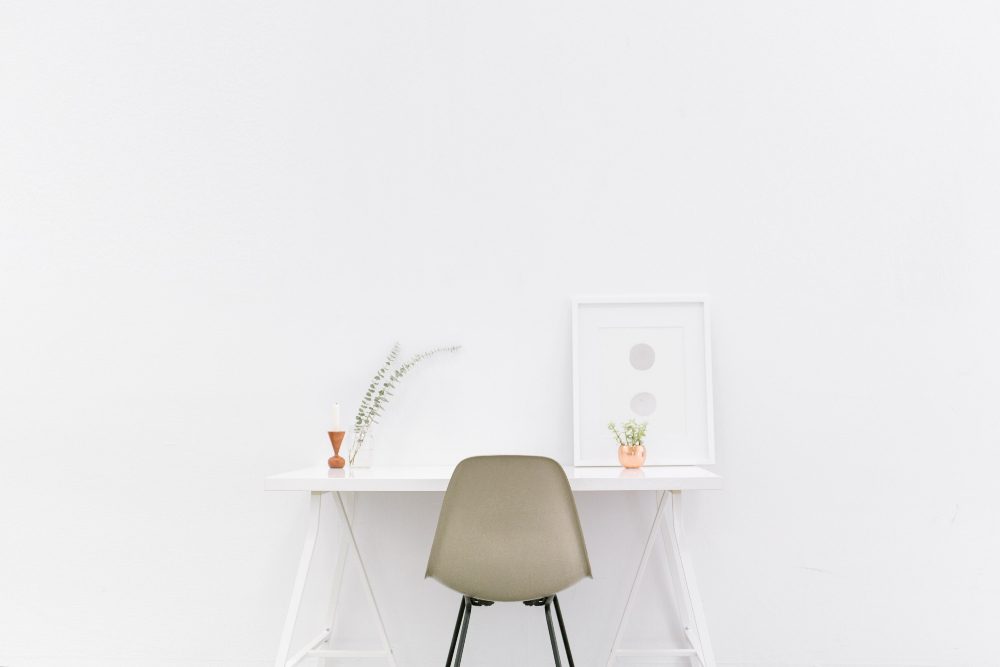
Ergonomics and Comfort
Ergonomics plays a significant role in modern furniture design. The focus is on creating pieces that are comfortable and support the body’s natural posture. This consideration is essential in areas like home offices, where people spend extended periods.
Lighting: Illuminating Modern Spaces
Lighting plays a critical role in modern home interior design, shaping how spaces look and feel. Modern lighting techniques and fixtures are not just functional; they are central to the overall aesthetic and ambiance of a home. In this section, we’ll explore how lighting is used to enhance modern living spaces.
Modern Lighting Techniques and Fixtures
Modern home interior design often features innovative lighting solutions. LED fixtures are the most common lighting solution among modernized houses. Recessed lighting and track lighting offer a clean, streamlined look, perfect for modern aesthetics. Pendant lights and statement fixtures are used as focal points, adding a touch of elegance and style.
The Impact of Lighting on Interior Ambiance
Lighting in modern home interior design is crucial in setting the mood of a room. Dimmer switches allow for adjustable light levels, creating an ambiance that can change from bright and energetic to soft and relaxing. Accent lighting is used to highlight architectural features or artwork, adding depth and dimension to a space.
Natural Light in Modern Design
Maximizing natural light is a key aspect of modern home interior design. Large windows, skylights, and glass doors are common features, bringing in daylight and connecting the interior with the outside world. The use of sheer or minimal window treatments allows for maximum light exposure while still offering privacy.
Smart Lighting Systems
In line with the integration of technology in modern homes, smart lighting systems are increasingly popular. These systems allow for remote control of lighting, including color temperature and intensity adjustments. Smart lighting can be programmed to change throughout the day, complementing natural light patterns and enhancing the living experience.
Sustainable Lighting Options
Sustainability in lighting is also a consideration in modern home interior design. Lighting in modernized homes use sustainable energy sources like solar or energy-efficient fixtures like LED bulbs. These choices not only reduce the environmental impact but also offer cost savings over time.
Art and Decor in Modern Interior Design
Art and decor are essential components in modern home interior design, adding personality and depth to contemporary spaces. In modern homes, the selection of art and decorative elements reflects not only aesthetic preferences but also individual personalities and lifestyles. This section explores how art and decor are integrated into modern interior design.
Incorporating Art into Modern Homes
In modern home interior design, art plays a key role in expressing personal style and bringing life to a space. Large-scale paintings or photographs make bold statements, while collections of smaller pieces can create a curated gallery wall. Modern homes often feature artwork that complements the minimalistic and clean lines of the design, with pieces that evoke emotion or thought.
Decor Trends That Complement Modern Aesthetics
Decor in modern home interior design is often characterized by its simplicity and functional beauty. Items like vases, sculptures, and textiles are chosen for their ability to enhance the space without cluttering it. Modern decor tends to favor a less-is-more approach, with each piece carefully selected for its design impact and utility.
Texture and Color in Modern Decor
Textures and colors in decor elements add layers of interest to modern interiors. Soft furnishings like rugs, cushions, and throws introduce warmth and comfort. Contrasting textures, such as smooth ceramics against rough textiles, create a dynamic interplay. The use of color in decor items can add vibrancy to a neutral color palette, injecting personality into the space.
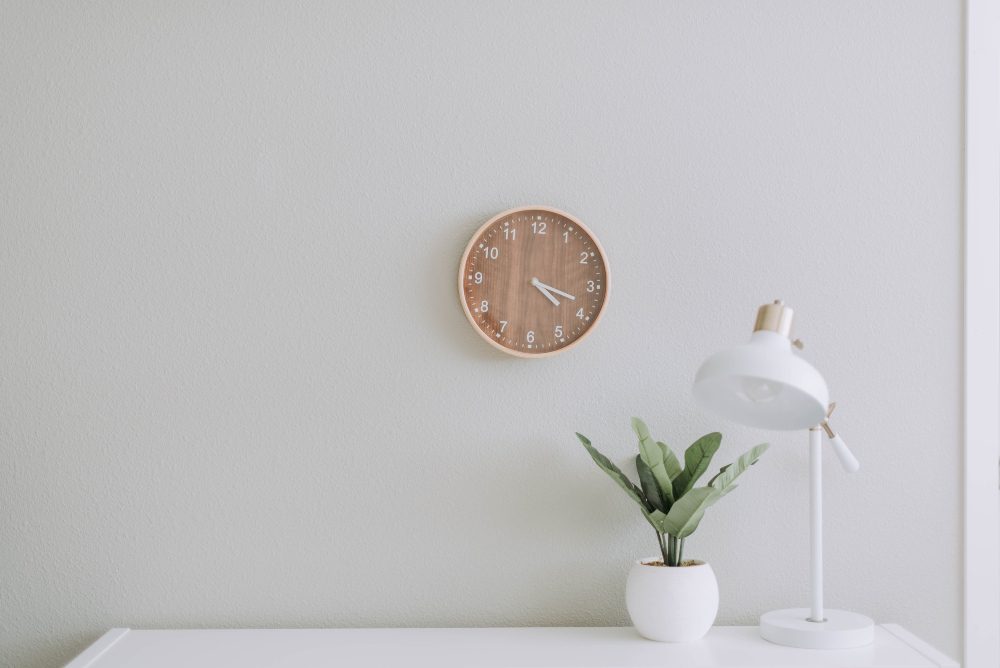
Sustainable and Handcrafted Elements
Sustainability and craftsmanship are increasingly important in modern home interior design. Handcrafted decor pieces, often made from sustainable or recycled materials, bring uniqueness and a story to the space. These elements align with the modern ethos of mindful and responsible living.
Integrating Nature and Greenery
The inclusion of plants and natural elements is a growing trend in modern interior design. Indoor plants, terrariums, and botanical prints connect the indoors with the natural world. These plants can also purify the air, boosting everyone’s health within the house.
Functional Art and Decor
In modern home interior design, art and decor often serve a functional purpose. Decorative objects that double as storage solutions or artistic lighting fixtures are examples of this dual functionality. This approach ensures that every element in the space is both beautiful and practical.
Challenges and Considerations in Modern Design
We now focus on the many barriers and challenges that come with modernized homes. Addressing these aspects is crucial for creating spaces that are not only stylish but also livable and sustainable. Let’s delve into some of the common challenges and key considerations in modern interior design.
Balancing Aesthetics and Functionality
Creating a balance between function and aesthetics is the first and hardest challenge in creating a modernized home. While minimalism and sleek lines can create stunning visual appeal, they must also serve the practical needs of the inhabitants. Ensuring sufficient storage, comfortable living spaces, and usability while maintaining a modern aesthetic requires thoughtful planning and design.
Adapting to Space Limitations
In urban environments, where space is often limited, modern home interior design must be cleverly executed to maximize the available area. This may involve multifunctional furniture, innovative storage solutions, and spatial layouts that create an illusion of spaciousness. Designers must work within these constraints to create functional, comfortable, and visually appealing spaces.
Incorporating Personal Style
Another consideration in modern home interior design is incorporating personal style and character into the space. While minimalist space looks great, it can look bland and industrialized if done incorrectly. This could be through color choices, artwork, or unique decor items.
Sustainability and Environmental Impact
The growing emphasis on sustainability presents both a challenge and an opportunity in modern home interior design. Modernized homes are built to benefit the tenants and the surrounding environment through the smart use of materials, furniture, and appliances. This involves choosing eco-friendly materials, energy-saving appliances, and sustainable practices.
Technological Integration
As technology advances, integrating it seamlessly into modern home interior design is a challenge. The technology should enhance the functionality and comfort of the home without disrupting its aesthetic. This includes smart home systems, entertainment setups, and automated controls that are both intuitive and discreet.
Cost Considerations
Budget is a significant consideration in modern home interior design. High-quality materials, custom furniture, and advanced technology can be costly. Balancing the desire for a modern aesthetic with a realistic budget requires careful planning and creative solutions.
FAQs on Modern Interior Design
What is the main principle of modern interior design?
The main principle is to create functional, clutter-free spaces with a focus on simplicity and clean lines. It often involves a neutral color palette, natural light, and a blend of natural and industrial materials.
How can I incorporate modern design into a small space?
Utilize multi-functional furniture, embrace minimalism to reduce clutter, and use light colors to make the space feel larger. Mirrors and strategic lighting can also help to visually expand a small area.
Is modern design the same as contemporary design?
Modern design refers to a specific historical design movement with key characteristics, while contemporary design refers to the styles and trends of the present day, which can vary and evolve.
Can modern interiors be warm and inviting?
Absolutely. Although modern design favors clean lines and simplicity, it can be warm and inviting through the use of textural elements, warm color accents, and comfortable furnishings.
How important is lighting in modern design?
Every modernized home uses lighting to improve the space. Modern design often uses a mix of natural lighting and varied light fixtures for different purposes.
Can I mix other design styles with modern design?
Modern design can be blended with other styles for a unique look. It’s common to mix modern elements with rustic, industrial, or even traditional pieces for a personalized aesthetic.
What materials are commonly used in modern interior design?
Modernized homes tend to use glass, steel, concrete, and wood. The use of sustainable and eco-friendly materials is also increasingly popular.
Are plants and greenery suitable for modern interiors?
Yes, plants are a great addition to modern interiors. They bring in natural elements and color and can improve air quality.
How can I make my home “smart” while keeping a modern design aesthetic?
Choose smart devices that blend with your decor or are discreet. Many smart home technologies are designed with a minimalist and sleek appearance to fit into modern interiors seamlessly.
What colors go best with a modernized home?
Use accent pieces like cushions, artwork, or a single feature wall to add color. This approach allows for flexibility and can be easily changed to suit evolving tastes.
Conclusion
Exploring modern home interior design reveals a house where functionality meets aesthetics. Modern designs focus on minimalism and sustainability. It offers a way to create spaces that are not just visually striking but also comfortable and reflective of individual personalities. The integration of technology, innovative use of color, and thoughtful incorporation of art and decor further enhance the appeal of modern interiors.








